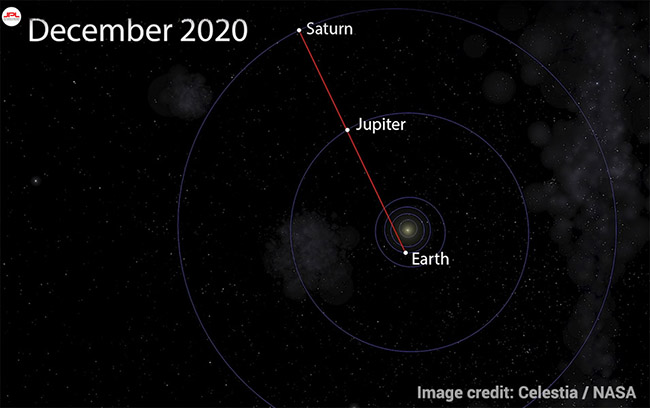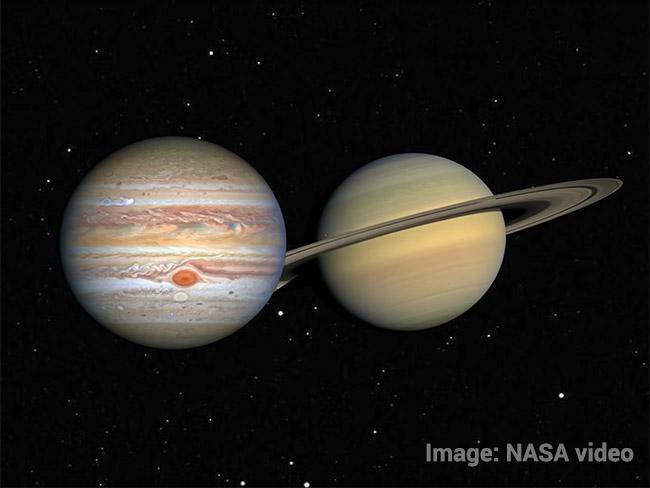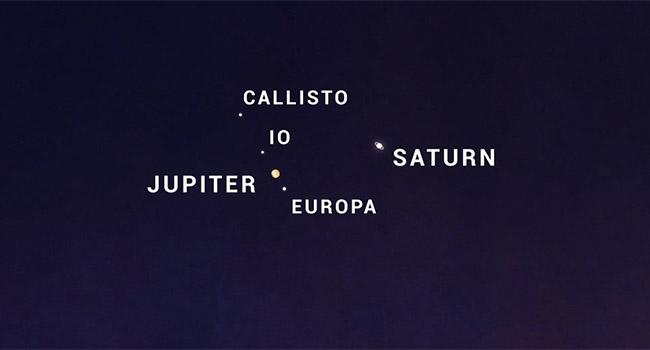
New York Times
By Michael Levenson
On Dec. 21, Jupiter and Saturn will appear to be no more than a dime’s width apart in the night sky. The last time that could be seen was in 1226.
For months, Saturn and Jupiter have appeared to be courting, as the giant celestial bodies have gradually drawn nearer in the night sky.
Over the next two weeks, as their orbits align more closely, the planets will pull closer until they appear to be just a tenth of a degree apart — about the thickness of a dime held at arm’s length, according to NASA.
The encounter, known as a great conjunction, happens about every 20 years. But this one — arriving Dec. 21, the winter solstice — is special, astronomers said.

It will be the closest alignment of Saturn and Jupiter, the largest planets in our solar system, since 1623. But that conjunction, just 14 years after Galileo built his first telescope, was 13 degrees away from the sun, making it almost impossible to view from Earth, said Amy C. Oliver, a spokeswoman for the Center for Astrophysics, Harvard & Smithsonian.
This one will be the closest visible encounter between the two giants since the Middle Ages, in 1226, Oliver said. The next time the planets will be this close is 2080, she said, making the event a once-in-a-lifetime spectacle for most adults.
Across the United States, the best view of the two planets coming into near-alignment will be just after sunset, in the southwestern portion of the sky.
“It’s a very elegant astronomical event to watch in the night sky,” said Renu Malhotra, a professor of planetary sciences at the University of Arizona. “It’s a very romantic event to see these planets approaching each other.”
Although best appreciated with binoculars or a telescope, the encounter should be visible to the naked eye.
Konstantin Batygin, a professor of planetary science at the California Institute of Technology, said he had been watching Jupiter and Saturn draw closer to one another on nightly walks with his dog.
“It’s the rare astronomical event where you can appreciate the motion of the planets around the sun without being some kind of astronomer,” Batygin said. “You can still go outside close to Christmas and say, ‘Wow, those two planets sure are close to one another.’”
c.2020 The New York Times Company
--
See also:
Great conjunction of Jupiter and Saturn, appears as bright star before Christmas by Firita. Matangi Tonga Online, 24 August 2020.





